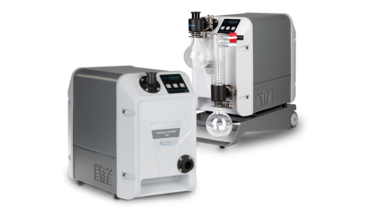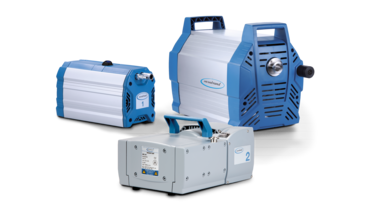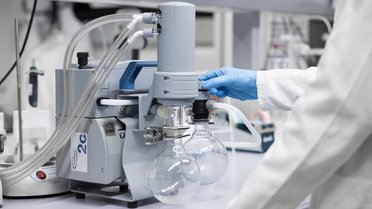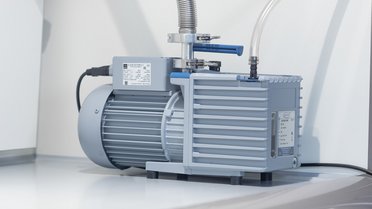
Degassing
Vacuum degassing is used, for example, in sample preparation for HPLC or in materials research and production. Dissolved gases are removed from liquids in order to avoid negative influences.

Vacuum for degassing
Rely on oil-free vacuum pumps
Vacuum degassing is based on Henry's law. According to this law, the volume of a dissolved gas is proportional to the pressure above the liquid. If this pressure is lowered, the gases can escape more easily.
The ultimate vacuum and pumping speed required for degassing depends on individual requirements such as the desired degree of degassing, the media used or the volume of the container.
If solvents are used, the vacuum pump should be chemically resistant. Oil-free vacuum pumps are particularly advantageous where high process purity is required. In addition, they do not cause any interruptions due to oil changes.
Diaphragm pumps meet all these criteria for the pressure range down to approx. 1 mbar and screw pumps down to the 10-3 mbar range. Both pump types are also suitable for larger volumes. The operation of a cold trap is very rarely required. They are therefore perfect for uninterrupted and low-maintenance operation.
For automation or multi-stage processes, the VACUU·SELECT controller offers the option of creating and saving individual processes.


















